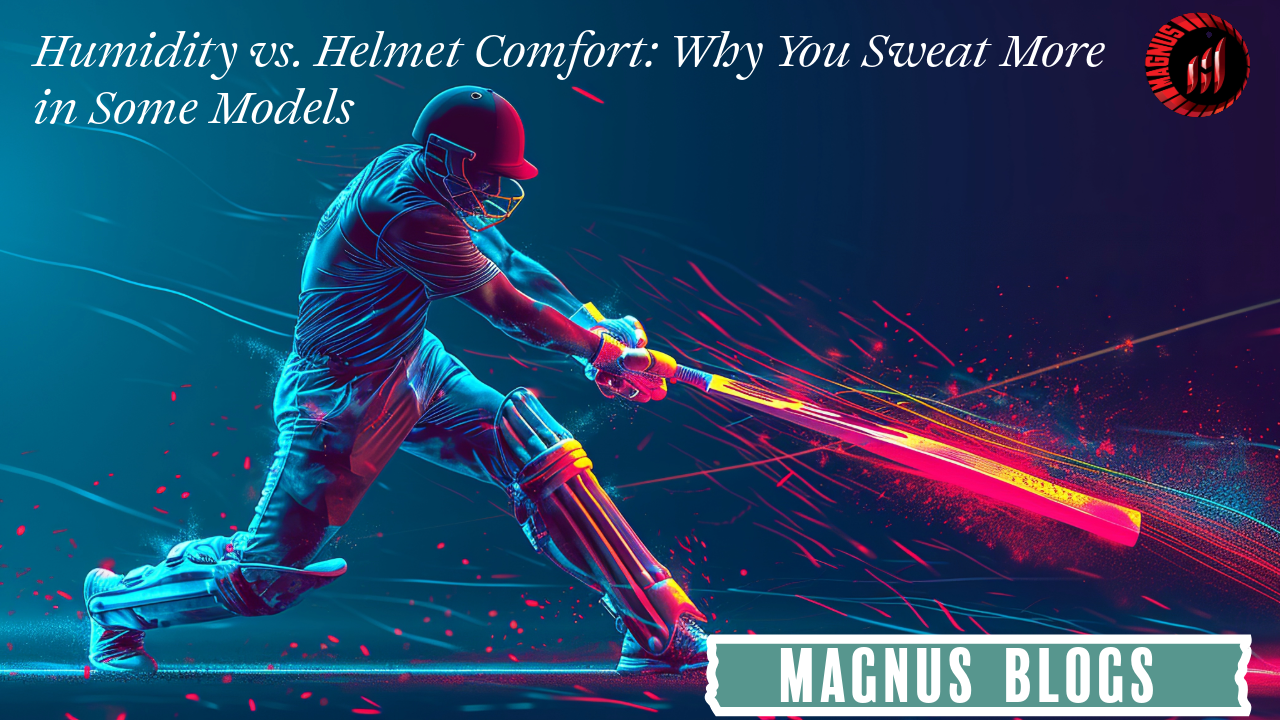In the high-stakes world of cricket, where mental clarity and physical comfort go hand-in-hand, even the smallest distractions can impact your performance. One common discomfort players face, especially in humid conditions, is excessive sweating under the helmet. While this might seem like a minor inconvenience, the discomfort from overheating can directly affect concentration, vision, and overall performance. But what causes this? Why do some helmets leave you drenched while others feel breezy?
Let’s break down the science behind helmet comfort—and how humidity plays a silent but powerful role.
Why Does Humidity Make You Sweat More?
Humidity refers to the amount of moisture in the air. In high humidity, sweat doesn’t evaporate easily. Since evaporation is the body’s natural cooling system, the lack of it leads to an increase in internal temperature. When you're wearing a cricket helmet in such conditions, it traps heat and moisture close to your head, amplifying discomfort.
Not All Helmets Are Made the Same
Some helmets are simply better equipped to handle humid environments. Here’s why certain models perform better:
1. Ventilation Design
Modern helmets have strategically placed air vents that allow for better airflow. These vents help hot, moist air escape and bring in cooler air from the outside. Traditional or budget helmets often lack proper venting, turning your head into a sauna.
2. Padding Material
Cheap foam padding tends to absorb sweat and retain heat. Premium models use moisture-wicking fabrics and breathable cushions that pull sweat away from the skin and allow it to evaporate faster.
3. Shell Material
Lighter shells made from advanced composite materials dissipate heat better than dense plastic shells. They also reduce pressure on the head, which can help reduce sweating over extended periods.
4. Inner Liner & Fit
A well-fitted helmet ensures that airflow isn’t blocked and that padding doesn’t suffocate the scalp. Some high-end helmets even come with removable liners that can be washed or replaced to improve hygiene and airflow.
Signs Your Helmet Isn’t Coping with Humidity
-
Constant sweat dripping into your eyes during batting
-
Helmet feels sticky or steamy after a few overs
-
Visible sweat patches on inner padding after a short session
-
You find yourself frequently adjusting or removing the helmet mid-innings
Tips to Stay Cooler in Humid Matches
-
Choose helmets with breathable mesh liners and multiple air vents
-
Use moisture-wicking skull caps under the helmet to reduce sweat buildup
-
Let your helmet air dry completely between sessions to prevent dampness
-
Avoid helmets with thick, non-removable foam padding if playing in tropical climates
-
Keep a backup helmet or pads if you’re playing long innings in intense humidity
Cricket bat types, Cricket equipment in usa, Cricket equipment store, Cricket gloves, Cricket helmet, Cricket kit bags, Cricket retailers, Durable cricket gloves, English willow bats, Icc approved helmets., Kashmir willow cricket bat, Latest kashmir willow bat
